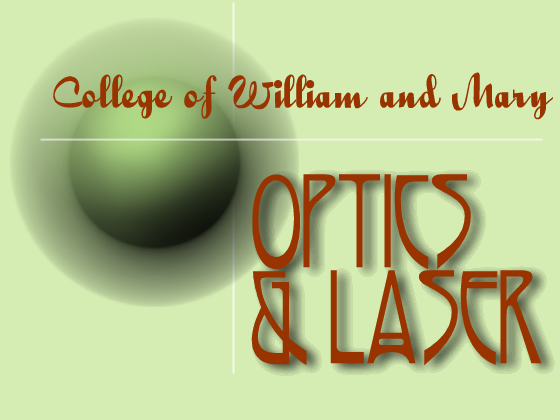
| |
| Home |
| Contact |
| Directions |
| Research |
| People |
| Publications |
| Photos |
| myWM |
Exchange Bias |
The ferromagnet/oxide interface is key to developing emerging multiferroic and spintronic technologies with new functionality. Here we observed a pronounced shift in the interface magnetization hysteresis loop from zero field, the classic signature of exchange bias. Such a shift is not observed in the ‘bulk’ magnetization (that is, the net magnetization of the Fe film), which we measured using standard magnetometry and MOKE, in striking contrast to studies of exchange bias systems studied to date. This signals the presence of an antiferromagnetic exchange pinning layer at the interface, and shows that the magnetic moments at the interface are not parallel to the net magnetization of the Fe layer as the magnetization is switched, contrary to expectation. We control the magnitude of the exchange bias field by varying the interface oxygen concentration, confirming that this effect is induced by Fe–O bonding and compound formation, and is likely to be present even for ‘clean’ MgO surfaces. We believe that this is another factor to be considered in understanding the TMR observed in this system, and also has implications for developing electric field control of magnetic anisotropy at the Fe/MgO interface.
 |
|---|
Figure 1. Measurement geometry and MOKE/MSHG data. a, Schematic of the optical measurements. MOKE measures the net magnetization (bulk) of the Fe film, and MSHG selectively probes the interface magnetization only. b, MOKE data for a 10 nm Fe/MgO(001) sample with a high density of oxygen on the MgO surface before Fe deposition. The curve exhibits a symmetric magnetization loop. c, MSHG data from the same sample. The curve exhibits a pronounced offset along the horizontal axis, the classic signature of exchange bias. d,e, Corresponding data for a sample prepared with no oxygen exposure of the MgO surface, using conditions typically used to produce a clean starting surface for growth of Fe/MgO/Fe MTJs, with a normal amount of oxygen at the interface. The MSHG curve in e exhibits a pronounced exchange bias. f,g, Corresponding data for a sample with a minimum density of oxygen on the MgO surface, exhibiting no exchange bias. The exchange bias fields HE and coercive fields Hc are indicated in each panel. Black and red curves are taken with the magnetic field sweeping from negative to positive, and from positive to negative, respectively. Data are acquired over a field range of ±366 Oe, and no additional switching is observed beyond ±50 Oe. All data are obtained at room temperature with the magnetic field applied along the in-plane easy axis, Fe[100].
 |
|---|
Figure 2 plots the strength of the interface exchange bias field HE versus the direction of the in-plane applied magnetic field used for the MSHG measurement relative to the Fe crystal axes for a variety of concentrations. The filled squares, triangles and circles represent the exchange bias magnitude for interfaces with high, normal and low oxygen anion densities, respectively, for samples grown at room temperature. Open triangles represent data for an interface grown at 473 K with normal oxygen anion density. All samples were first field annealed along [100]. The grey curve represents the unidirectional anisotropy for which the magnitude is proportional to |cos θ|, where θ is the angle between the applied field and the [100] crystallographic axis. The magnitude of the exchange bias has maxima in [100] and [-100], minima in the orthogonal direction, and intermediate values along the <110> axes, consistent with the |cos θ| model.
Along [100], the exchange bias field HE of samples grown at room temperature exhibits a monotonic increase with increasing interface oxygen anion density (the strength increases from 0 Oe for the low oxygen density sample to 8 Oe for the normal and 19 Oe for the high-density sample). This behavior demonstrates that the degree of Fe–O interaction plays a critical role in the interface exchange bias. The interface grown at 473 K with normal oxygen anion density shows a slightly smaller exchange bias strength than the corresponding sample grown at room temperature. Electron energy loss spectroscopy reveals that a higher growth temperature suppresses the formation of FeO at the interface. Thus, the lower value of HE is consistent with reduced formation of FeO. Both the initial oxygen exposure of the MgO(001) surface and the growth temperature control the magnitude of the interface exchange bias by changing the density of local FeO formation and corresponding antiferromagnetic exchange pinning sites at the Fe/MgO interface.
References:
- Y. Fan, K. J. Smith, H. B. Zhao and B. T. Jonker, Exchange bias of the interface spin system at the Fe/MgO interface, Nature Nanotechnology 8 (2013), 438.
Funding: DOE
|